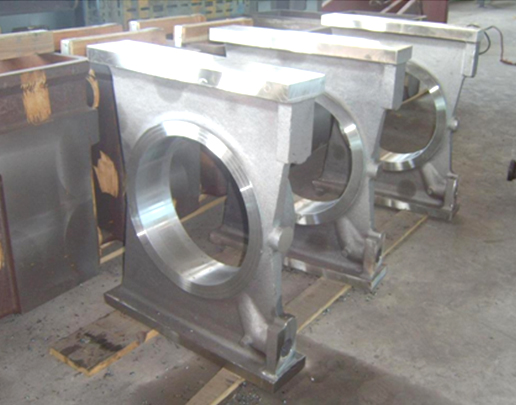With the continuous advancement of technology and innovation of processes, the quality and performance of Dalian castings have been greatly improved, and they have important applications in various fields. With the development of intelligence and automation in industrial manufacturing, the production process of castings is gradually being optimized and improved, providing more possibilities for enterprises to improve production efficiency and reduce production costs.
Capable of producing rough materials with complex internal cavities and shapes, such as various boxes, machine tool beds, cylinder blocks, cylinder heads, etc. The size of liquid formed parts is almost unlimited, with weights ranging from a few grams to several hundred tons and wall thicknesses ranging from 0.5mm to 1m. Any metal material that can dissolve into a liquid state in industry can be used for liquid forming.
What is the difference between Dalian castings and forgings?
Cast parts are manufactured by melting metal and pouring it into a mold to form the desired shape, while forged parts are made by heating the metal to a certain temperature and then applying pressure for plastic deformation. Therefore, castings have high forming flexibility and can manufacture components with complex shapes and thin-walled structures. Forged parts have high mechanical properties, such as hardness, strength, and wear resistance.
Secondly, castings and forgings have different requirements for raw materials during the manufacturing process. Casting parts usually use liquid metal as raw material, while forging parts usually use solid metal billets as raw material. Due to the fact that castings are formed by melting metal and pouring it into molds, the requirements for the type and composition of raw materials are relatively low. During the processing of forged parts, it is necessary to consider the flow and deformation properties of the metal, therefore, high requirements are placed on the mechanical properties and microstructure of the raw materials.
In addition, there are certain differences in surface quality and accuracy between castings and forgings. Due to the fact that castings are made by casting liquid metal, the surface is prone to porosity, inclusions, and defects, which require cleaning and surface treatment to achieve good surface quality. And forged parts are formed by pressure deformation of metal billets at a certain temperature, so the metal has good fluidity and the surface quality after forming is relatively high, usually without additional surface treatment.
In addition, there are certain differences in cost and production efficiency between castings and forgings. Under normal circumstances, the cost of castings is low, production efficiency is high, and they are suitable for mass production and large-scale production; The cost of forged parts is relatively high and the production efficiency is low, making them suitable for the production of small batches, high-precision, and high-quality components.
The manufacturing process of castings mainly includes stages such as casting, melting, casting, solidification, and post-treatment. Firstly, a mold is made using a certain mold, and molten metal or alloy liquid is injected into the mold. Then, after the metal solidifies, it is taken out and subjected to post-processing such as grinding and cleaning to obtain the finished parts.
Application areas. In the mechanical manufacturing industry, many parts such as machine tool beds, workbenches, gears, and shafts are made of cast parts. In automobile manufacturing, casting processes are also commonly used to produce engine cylinder blocks, cylinder heads, transmission housings, wheel hubs, etc. Aerospace field: Used for manufacturing heat-resistant alloy parts with complex shapes, precise dimensions, and smooth surfaces such as blades, impellers, nozzles, etc. for aircraft engines, as well as structural components for some spacecraft.






